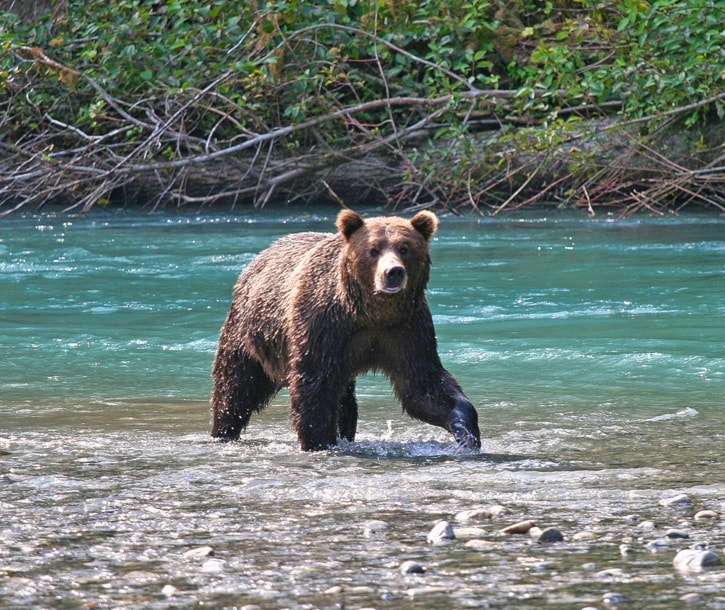Ministry of Forests, Lands and Natural Resource Operations
VICTORIA – A study of grizzly bear populations released recently provides further insight into populations in British Columbia, while confirming that provincial wildlife biologists continue to refine estimates with the best available science to ensure harvest levels are sustainable.
The peer-reviewed study, entitled “Predicting grizzly bear density in western North America” is co-authored by two provincial wildlife biologists and is published in the science journal, PLOS ONE. The predictions are based on a model that generated population estimates for all areas of B.C. The model does not suggest any change in grizzly bear numbers, but does provide improved information and increased understanding about factors influencing grizzly bear density.
The model predicted a population of 13,131 bears. This prediction is one factor considered in estimating populations. Other data sources include field inventory work using DNA sampling (typically gathered via grizzly bear hair recovered at bait sites). Taken together, these data sources helped inform the most recent provincial grizzly bear population of approximately 15,000 bears.
While the study is only being published now, ministry wildlife biologists used predictions in the model alongside other available data when making grizzly bear management decisions in 2012 and 2013. In those areas where the combined result showed harvest rates higher than policy recommends, hunting opportunities were reduced. Grizzly bear harvest rates in British Columbia are set conservatively and well below what the population can sustain (historically, hunters have killed around 300 grizzly bears a year or a two per cent harvest rate).
The study provides insights into grizzly bear habitat and population. Some of the model’s findings suggest:
* Grizzly bears are more abundant in non-forested areas probably because the plants that they eat are more likely to grow in open environments.
* Confirmation of earlier studies that showed greater salmon availability leads to larger numbers of grizzly bears.
* Grizzly bear density is lower where black bears are present.
* The North Cascades, an area where grizzly bears have been largely absent for many decades, could support several hundred grizzly bears both north and south of the Canada-USA border.
* The number of bears killed by people was not related to population density which suggests that current levels of mortality do not measurably reduce population size.
* There is a lower density of bears in areas with high human density and in flat areas with low rainfall.
The study reaffirms that grizzly populations in B.C. are being sustainably managed, and with the best available science. To read the full report visit: http://dx.plos.org/10.1371/journal.pone.0082757
